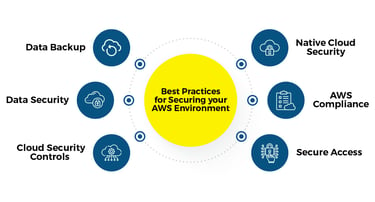The Comprehensive Guide to AWS Cloud Migration: A Step-by-Step Approach
Move your business to the AWS cloud for better infrastructure. Learn the basics, benefits, and steps: assess, plan, design, test, migrate, validate, and optimize. This will help with scalability, saving money, and ensuring security.


Introduction to AWS Cloud Migration
Migrating to the AWS cloud can be a game-changer for businesses looking to enhance their infrastructure. It involves moving data, applications, and other business elements from local servers to a cloud environment. This guide will look at the essential features of AWS cloud migration.
Understanding the Basics of Cloud Migration
Cloud migration refers to moving digital assets to a cloud environment. With AWS, organizations can use various services to make their operations smoother and more efficient.
Benefits of Migrating to AWS Cloud
Migrating to the AWS cloud offers numerous benefits for businesses:
Scalability: AWS offers scalable solutions, letting businesses easily change their resources as needed. This adaptability enables peak performance and cost-effectiveness.
Cost Savings: By moving to AWS, organizations can lower their spending on hardware and infrastructure. They can also take advantage of pay-as-you-go pricing models, only paying for the resources they use.
Reliability and Availability: AWS provides a very reliable infrastructure with built-in redundancy. This ensures minimal downtime and maximum availability for applications and data.
Security: AWS stresses security and compliance, offering organizations strong security protections and certifications. This helps to protect sensitive data and reduces potential hazards.
Ease of Management: AWS provides an easy-to-use interface and complete management tools. This helps businesses manage their infrastructure, monitor performance, and automate tasks more easily.
Key Steps in AWS Cloud Migration
When planning an AWS cloud migration, it is important to follow a systematic approach. Here are the key steps involved:
Assessment: Check your current infrastructure, applications, and data to see if they are compatible with AWS. Identify any dependencies and potential challenges that may arise during the migration process.
Planning: Create a detailed migration plan that includes the timeline, what resources you’ll need, and any potential risks. Consider factors such as data transfer, application migration, and user training.
Design: Design the target architecture on AWS by keeping scalability, security, and performance in mind. Define the AWS services and configurations needed for the migration.
Testing: Test thoroughly to make sure the migrated applications and data work correctly in the AWS environment. Identify and resolve any issues or compatibility issues that may arise.
Migration: Carry out the migration plan by following best practices and using AWS migration tools and services. Monitor the migration process closely to ensure a smooth transition.
Validation: Check the migrated applications and data to make sure they are working correctly in the AWS environment. Perform necessary tests and checks to confirm the success of the migration.
Optimization: Continuously optimize your AWS infrastructure to maximize performance, cost-efficiency, and security. Regularly review and refine your architecture, leveraging AWS monitoring and optimization tools.
Conclusion
Migrating to the AWS cloud can bring many benefits to businesses. These advantages include scalability, cost savings, dependability, security, and ease of management. By using a clear, step-by-step plan and AWS tools, organizations can move their systems to the cloud successfully. This allows them to take full advantage of what the cloud has to offer.
FAQ's
How can AWS cloud consultancy help with ongoing cloud management?
AWS cloud consultancy can help with ongoing management by providing support for:
Performance Optimization: Fine-tuning your cloud environment for better efficiency.
Cost Management: Identifying ways to reduce costs and manage spending.
Security Updates: Keeping your infrastructure secure with the latest updates and best practices.
Troubleshooting: Addressing any issues that arise and ensuring smooth operation.
How long does an AWS cloud migration normally take?
The time it takes to migrate to AWS can differ depending on a few things. It depends on how much data you have, how complex your applications are, and how well you prepare for the migration. The more data and the more complex the setup, the longer it may take. Good preparation can help speed up the process. Generally, it can take anywhere from a few weeks to several months. A detailed plan and proper management can help ensure a timely migration.
What should be included in an AWS cloud migration plan?
An AWS cloud migration plan should include:
Assessment Findings: Details of your current infrastructure and applications.
Migration Strategy: Steps for moving data and applications.
Timeline: Key milestones and deadlines.
Resource Requirements: Necessary AWS services and tools.
Risk Management: Potential risks and mitigation strategies.
Training Plan: Training needs for your team.
How can I ensure high availability and reliability in my AWS environment?
To keep your AWS environment reliable and always available, use some key AWS features and services. Start by spreading your resources across multiple Availability Zones (AZs) and regions. This way, if one zone or region has a problem, your services will still run smoothly in others. Also, set up load balancing to evenly spread traffic across your servers. This helps avoid overloading any single server. For your databases, use AWS services like Amazon RDS, which offers automatic backups and failover options. These features ensure that your database remains reliable and can quickly recover from issues. Regularly test your disaster recovery plan to ensure that you can quickly recover from any unexpected outages or issues.


